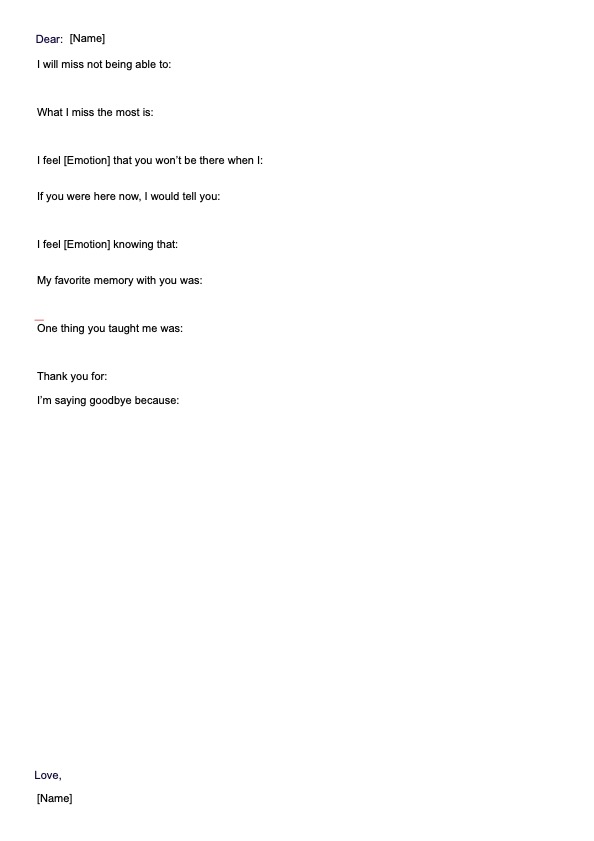A grief letter is a structured outlet for expressing emotions, memories, and farewells. It supports individuals on their new journey without this person.

Grief Letter Template
Use this Grief Letter Template to support clients through the most challenging time. Download it for free today.
Use Template
Grief Letter Template Template
Commonly asked questions
There are no strict rules to the grief letter. The process is personal to focus on self-expression and emotional reflection. This is a template for those who might want to begin writing a letter but do not know where to begin. Also, it can be used as a great therapy activity.
It's an individual choice. Some may choose to share their grief letters as an open letter with close circles, while others might prefer to keep them private.
EHR and practice management software
Get started for free
*No credit card required
Free
$0/usd
Unlimited clients
Telehealth
1GB of storage
Client portal text
Automated billing and online payments











